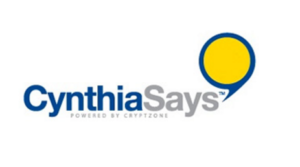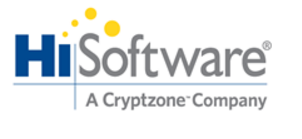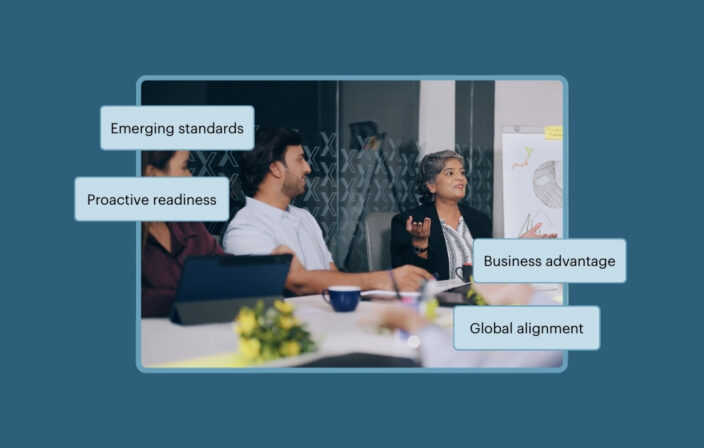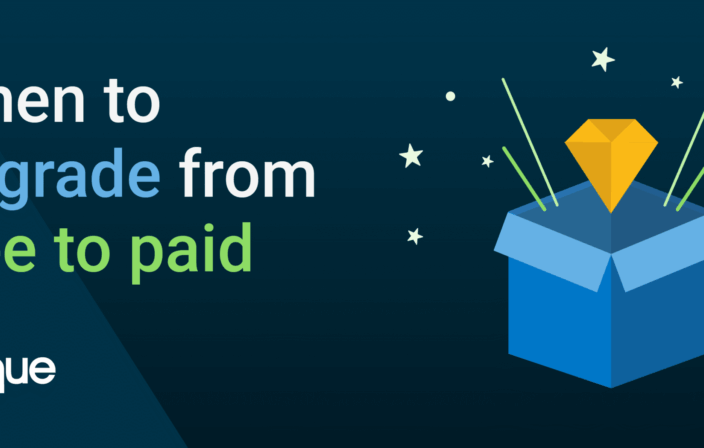As you know, at Deque we’re dedicated to empowering people with the right accessibility tools to make digital inclusion a reality. And it never ceases to amaze us how far the world of web accessibility has come in the past 20 years. Deque was established in 1999, just a few short years after the very first accessibility tools and accessibility checkers came out on the market.
Recently we took a trip down “accessibility tools memory lane” by asking our subject matter experts, “what were your favorite accessibility tools back in the day?” And by back in the day we mean all the way back to the early days of digital accessibility, when the internet was still in its infancy and Bobby and Cynthia Says were the names to know. But let’s not forget AccVerify (the original HiSoftware tool) and the IBM Home Page Reader. These accessibility tools paved the way for later tools that emerged in the accessibility industry – including Deque’s own product lineup. Read on to learn more about these early accessibility tools, and how they continue to make an impact on web accessibility today.
Accessibility Tools Personified: Bobby and Cynthia Says
The One and Only Bobby
Bobby was perhaps one of the most memorable first accessibility tools on the market. Developed and released in 1996 by the Center for Applied Special Technology (CAST), Bobby was a free online accessibility tool that was used to evaluate against WCAG 1.0, WAI and Section 508. Paul Bohman, Deque’s Director of Training, said, “Bobby was one of the original accessibility tools that everybody used back in the day. Everybody who knew about accessibility knew about Bobby.”
In addition to automated checks, Bobby provided easy to follow instructions for interpreting the often convoluted WAI guidelines. This accessibility checker became famous for its “Bobby Approved” badge, and by 1999 was used by web designers worldwide. For nearly a decade, this first generation accessibility tool enabled developers and designers to check for and fix accessibility issues – thus improving thousands of webpages.

Unsurprisingly, Bobby won the LD Access Foundation Leadership award, and was later a finalist for a Computerworld/Smithsonian Prize. Bobby’s success continued on into the early years of the 21st century, garnering more awards. The tool was then acquired by Watchfire in 2004, and was purchased by IBM two years later. Bobby was subsequently removed from service, but the icon of the British “Bobby” policeman will forever be endeared in the hearts of the first accessibility consultants. And indeed, every person we asked on our accessibility team mentioned Bobby as one of their favorite first early accessibility tools.
The Legacy of Cynthia Says
We couldn’t continue the conversation about first generation accessibility tools without mentioning Cynthia Says – a name that always comes up in connection with Bobby. For some of our experts, Cynthia Says preceded Bobby. “I remember being blown away by Cynthia Says. It was the first accessibility tool I ever discovered, quickly followed by Bobby,” said Denis Boudreau, Deque’s Principal Accessibility Consultant, Strategist and Trainer.
“In a nutshell, before I discovered Cynthia Says and Bobby, I had basically no idea of how to test for accessibility. Those tools allowed me to wrap my head around some of the basics. I didn’t know [about] a lot of other tools back then… I was taught mostly to do manual testing, so we would use those two, then dive into the source code to look for other problems. It was only a few years later that I finally looked into screen readers, and eventually, additional testing tools.”
Cynthia Says was an accessibility tool named in honor of Cynthia Waddell, an early accessibility subject matter expert who gained international recognition in the industry after she authored the first accessible web design standard in the US. This standard was widely considered as a best practice for accessibility by the federal government and paved the way for the eventual passage of legislation for Electronic and Information Technology Accessibility Standards (Section 508). Cynthia also authored numerous books on accessibility. Sadly, Cynthia Waddell passed away in 2013, but she left behind a remarkable legacy in her work within the accessibility industry.
ScreenReaders: The Earliest Accessibility Tool
pwWebspeak
pwWebSpeak was an early Windows-based screen reader, which was pretty unique for its time. That’s because it stemmed from the “first order design” approach, which is the idea that, according to Talking Interfaces, “HTML could be directly converted in a meaningful manner to audio using synthetic speech, bypassing any visual rendering of the content.” pwWebspeak used a rule base called Tag Language Definition (or TLD) which parsed HTML content to create a navigable, structured audio version of a Web page.
“What I liked about this screen reader was its reliance on the DOM -an early DOM-dependant screen reader,” said John Foliot, Deque’s Principal Accessibility Strategist, “and the fact that it’s visual interface also reflected the semantic structure of the web-page, which was useful in ‘teaching’ about the importance of semantic structure.”
IBM Home Page Reader
The majority of our accessibility experts polled mentioned using IBM Home Page Reader, often in conjunction with Bobby or Cynthia Says. The Home Page Reader (HPR) was a self-voicing web-browser designed for the blind. The efforts of computer scientist and mathematician Jim Thatcher at IBM led to the development of some of very first screen readers in the 1980’s (both versions commonly referred to as “Jim Thatcher’s Screen Reader).” The IBM Homepage Reader came out in 2005, nearly 20 years after the development of Jim Thatcher’s first screen reader. This version of the HPR was based largely on the work of Chieko Asakawa, who was a blind computer scientist and accessibility researcher at IBM Japan. Around 2006 the company stopped updating HPR and the tool is no longer used. Yet despite only being around for a short time, the IBM Home Page Reader made a lasting impact on web accessibility.
Accessibility Checkers & Fixers
HiSoftware Tools: Great First Generation Accessibility Checkers
 Another popular accessibility tool/accessibility fixer that came along after Bobby and Cynthia Says were the original HiSoftware tools AccVerify and AccRepair. The latter of the tools, AccRepair, was the desktop testing tool that could be used by developers during their production phase (similar to Deque’s WorldSpace Assure). AccVerify, on the other hand, was the server-based, compliance monitoring tool (similar to WorldSpace Comply). Interestingly, the “rules engine” that was AccVerify was also ported to the web-based evaluation tool Cynthia Says. John shared his experience with the tools: “I personally first started using [AccVerify] back in around 2003, in part because not only did it have a robust reporting engine, but the tool had been built in such a way as to allow for additional Quality Assurance checks to be run at the same time as the accessibility check was performed. This interested both myself and my former business partner at the time, as we were chasing Government of Canada “Common Look and Feel” requirements, and we were able to craft a set of additional ‘rules’ against those requirements.”
Another popular accessibility tool/accessibility fixer that came along after Bobby and Cynthia Says were the original HiSoftware tools AccVerify and AccRepair. The latter of the tools, AccRepair, was the desktop testing tool that could be used by developers during their production phase (similar to Deque’s WorldSpace Assure). AccVerify, on the other hand, was the server-based, compliance monitoring tool (similar to WorldSpace Comply). Interestingly, the “rules engine” that was AccVerify was also ported to the web-based evaluation tool Cynthia Says. John shared his experience with the tools: “I personally first started using [AccVerify] back in around 2003, in part because not only did it have a robust reporting engine, but the tool had been built in such a way as to allow for additional Quality Assurance checks to be run at the same time as the accessibility check was performed. This interested both myself and my former business partner at the time, as we were chasing Government of Canada “Common Look and Feel” requirements, and we were able to craft a set of additional ‘rules’ against those requirements.”
Once HiSoftware was subsequently bought out, the AccVerify tool was rolled into a larger product offering called Compliance Sheriff. It was later purchased by Cryptzone. While it’s no longer considered an active player in the web accessibility space, HiSoftware’s contributions to the world of web accessibility won’t soon be forgotten, and in fact inspired later generations of accessibility checkers.
ViewSource as Early A11y Tool
The aptly named ViewSource (as in: right-click, view source) was also used as a popular early accessibility tool amongst our accessibility experts, including John Foliot. “In addition to viewing the source code, I also would run that code through the W3C Validator, as WCAG 1.0 had a requirement for valid code to be compliant to WCAG 1.0.” John added that in the past, he also used A Real Validator. Manual code inspection was a critical function in the early days of web accessibility evaluation, and in many circumstances, it still is today.
WAVE is Still Making Waves
This is one of the few accessibility tools on the list that is still current. The Web Accessibility Evaluation Tool (better known as WAVE) is an accessibility checker that’s still used by many accessibility specialists today. Essentially a suite of accessibility tools, WAVE provides accessibility evaluation through visual representations of a web page’s accessibility issues. It’s a free online service, with Firefox and Chrome extensions as well as an API.
Several of our experts have used WAVE for years. Paul Bohman has personal experience using the tool while he worked at WebAIM. “Wave has been around a long time. It was a project first started by Len Kasday at Temple University, then WebAIM acquired rights to it. I led the development on it at WebAIM once we acquired it, and took it through a couple of iterations before I left to teach at George Mason University.”
Accessibility Tools Today
The impact of these early accessibility tools on digital accessibility is unquestionable. “Thanks to those tools, I realized the extent of what was required to test for accessibility, and that only a portion could be tested with automated tools. And it’s all been about learning how to do that efficiently since then and perfecting my craft,” explained Denis Boudreau. But as Denis and his fellow experts discovered, web accessibility turned out to be much more complicated than anyone envisioned – and it couldn’t be achieved by using just one or even a few tools. Denis agreed. “Initially, I was hoping we could just use a tool like Cynthia Says, and it would take care of everything. But nothing was further from the truth.” As we often stress here at Deque, Accessibility has to be built in from the ground up – and while accessibility tools are a huge component of that, the proper planning and training are of equal importance.
Still, it’s important to note how far web accessibility has come in such a short period of time. In the past decade alone, a variety of new accessibility tools and practices have brought us that much closer to our ultimate goal of digital inclusion. As accessibility standards change and the web evolves, we’ll continue to work towards creating dynamic products that can adapt. In a future post, we’ll poll our accessibility experts about their favorite current accessibility tools.
Editor’s Note: Accessibility experts and specialists tend to use a variety of accessibility tools simultaneously, and this was especially true in the early days of accessibility when there were less tools on the market. In our research for this post, virtually every respondent mentioned Bobby, Cynthia Says, and IBM Homepage Reader as their first accessibility tools. Numerous respondents also talked about WAVE, ViewSource and the HiSoftware suite of tools (AccVerify and AccRepair). Some of our accessibility experts also mentioned other accessibility tools (such as InFocus, JuicyStudio Accessibility Toolbar, and PEAT) – as well as FireEyes – which we did not detail here. This post highlighted the most popular accessibility tools used by our team in the early days of accessibility, so the focus is on the tools which were discussed at length by most or all of our respondents. In another post, we will talk about other accessibility tools not covered here.
Thanks to our accessibility subject matter experts, strategists and trainers for their input, including John Foliot, Denis Boudreau and Paul Bohman, Glenda Sims, Jeanine K. Lineback, Barry Johnson, Paul J. Adam, Katie Haritos-Shea, Gokhan Boybek and Kurt Mattes. Special thanks to John Foliot, Denis Boudreau and Paul Bohman for their additional contributions to this post.



